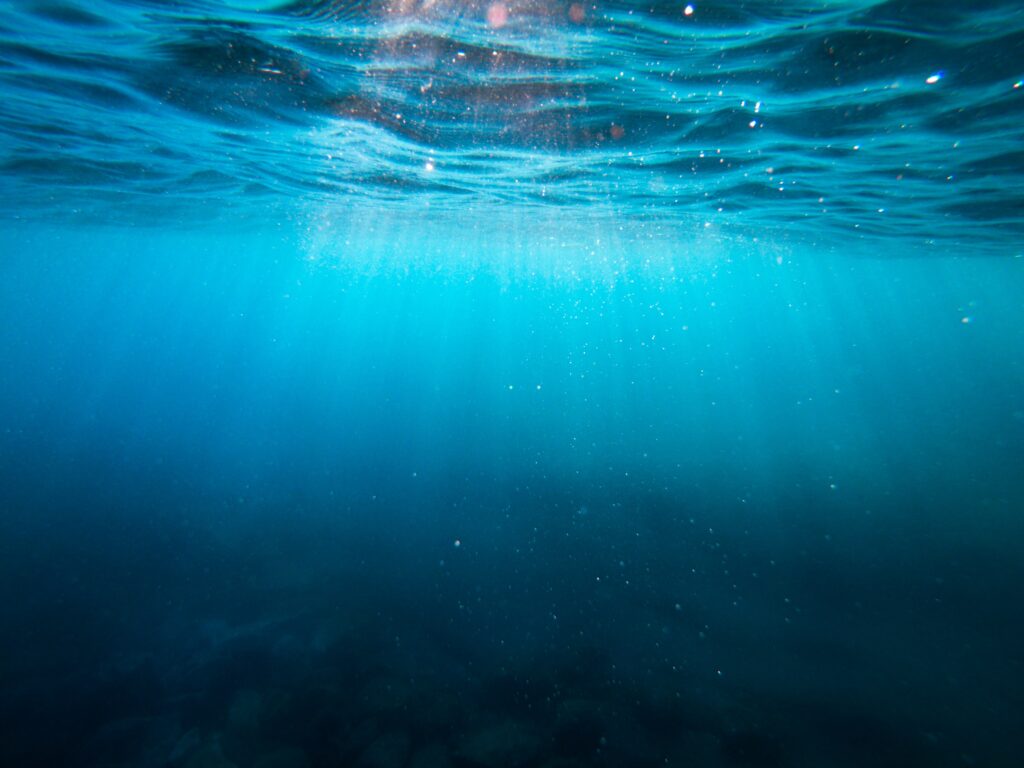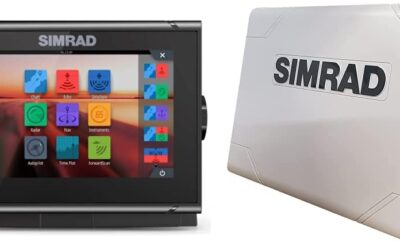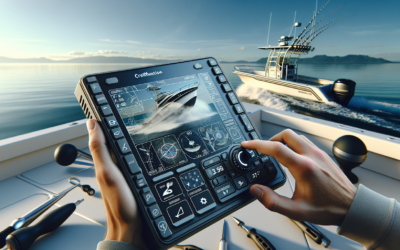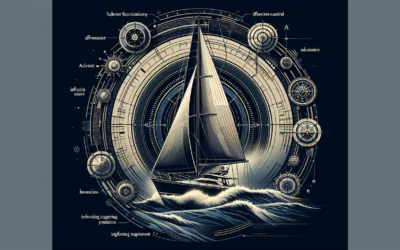Imagine exploring the depths of the ocean and uncovering the hidden wonders that lie beneath the surface. With “Sonar Science: How Fish Finders Detect Underwater Life,” you can now embark on an extraordinary journey of discovery. This revolutionary product uses sophisticated sonar technology to reveal the intricate world of underwater life, allowing you to witness firsthand the mesmerizing movements of fish and other aquatic creatures. Whether you are an avid angler or simply curious about the mysteries of the sea, “Sonar Science” will forever change the way you perceive the underwater realm. Get ready to dive into an enchanting adventure like no other.
Overview of Sonar Technology
What is sonar?
Sonar, short for sound navigation and ranging, is a technology that uses sound waves to detect and locate objects underwater. It works on the principle of echolocation, where sound waves are emitted and the echoes bouncing back are analyzed to gather information about the surrounding environment.
History of sonar
The development of sonar technology can be traced back to the early 20th century when scientists began experimenting with the use of sound underwater. The first practical application of sonar was in World War I, where it was used for submarine detection and warfare. Since then, sonar has evolved and found its way into a variety of industries, including fisheries, marine research, and recreational boating.
Types of sonar systems
There are different types of sonar systems, each with its own unique capabilities and applications. The most common types include:
- Single-beam sonar: This type of sonar system uses a single transducer to send and receive sound waves in a narrow beam. It provides a basic representation of the underwater environment, including the water depth and presence of objects.
- Dual-beam sonar: Dual-beam sonar systems employ two transducers, one for transmitting and the other for receiving sound waves. This allows for better coverage and increased accuracy in determining the size and shape of underwater objects.
- CHIRP sonar: CHIRP, which stands for compressed high-intensity radar pulse, is an advanced sonar technology that uses a range of frequencies to provide detailed and high-resolution images of the underwater world. It offers improved target separation and the ability to distinguish between different types of fish and structures.
Principles of Sonar
Echo-ranging
Echo-ranging is the fundamental principle behind sonar technology. It involves emitting a sound wave, commonly referred to as a ping, into the water and measuring the time it takes for the echo to return. By knowing the speed of sound in water and the time taken for the echo to bounce back, the distance to an object can be calculated.
Transducers and signals
Transducers play a crucial role in sonar systems. They convert electrical energy into sound waves and vice versa. When a transducer emits a sound wave, it acts as a projector, and when it receives the echo, it behaves as a microphone. The signals sent by the transducer are carefully tuned to specific frequencies that are optimal for underwater detection and imaging.
Interpreting sonar data
Interpreting sonar data requires expertise and an understanding of different visual representations. The data received from the transducer is processed and displayed on a display unit, often referred to as a fish finder. Different sonar systems may present the data in the form of fish arches, bottom contours, or raw signals, each requiring interpretation to identify fish and other objects.

Components of a Fish Finder
Transducer
The transducer is a critical component of a fish finder. It is typically mounted on the hull of a boat or the transom and is responsible for emitting and receiving sound waves. Transducers come in various shapes and sizes, depending on the type of sonar system and its intended use. It is important to choose the right transducer for optimal performance and compatibility with the fish finder unit.
Display unit
The display unit is where the sonar data is visualized and presented to the user. It may be a standalone device or integrated into a multifunction display (MFD) unit. The display unit provides real-time feedback and allows users to customize settings, interpret the sonar data, and make informed decisions while fishing or navigating.
Power source
To operate a fish finder, a reliable power source is essential. Fish finders can be powered by a boat’s battery or a separate portable power supply. It is important to ensure an adequate power supply to prevent interruptions in sonar performance and maintain consistent operation throughout fishing trips.
Transducers and Echolocation
Transducer types (single-beam, dual-beam, and CHIRP)
Different transducer types offer varying levels of performance and versatility.
- Single-beam transducers are straightforward and ideal for basic depth measurements and locating underwater structures.
- Dual-beam transducers provide a wider coverage area and more accurate readings of the underwater environment by transmitting and receiving two beams simultaneously.
- CHIRP transducers use a broader range of frequencies, enabling higher resolution and clearer images of fish and structures. They offer superior target separation and are commonly preferred by serious anglers and professionals.
Operating frequencies
Operating frequencies play a crucial role in sonar performance. Higher frequencies, such as 200 kHz or more, provide better resolution and are ideal for shallow water fishing. Lower frequencies, around 50 kHz, offer better range and depth penetration, making them suitable for deeper waters.
Beam angles
The beam angle of a transducer determines the coverage area and the width of the sonar cone emitted into the water. Wider beam angles, typically found in lower frequency transducers, cover a larger area but sacrifice some detail. Narrower beams, more common in higher frequency transducers, offer greater detail but cover a smaller area.
Signal Processing and Data Interpretation
Echo detection and analysis
Echo detection involves analyzing the received signals to identify echoes that represent underwater objects or fish. Fish finders employ sophisticated algorithms and signal processing techniques to differentiate between echoes from fish, submerged structures, and other obstacles. The analysis takes into account factors like signal strength, shape, timing, and distance to determine the nature of the objects detected.
Displaying sonar data
Sonar data is displayed in various formats on the fish finder’s screen. Common representations include fish arches, which indicate the presence of fish, as well as color-coded depth contours, allowing users to visualize changes in underwater terrain. Advanced fish finders may also offer side-scan or down-scan imaging, providing detailed images of the bottom structure and fish locations.
Interpreting fish arches and targets
Interpreting fish arches and targets requires an understanding of how fish move and behave underwater. Fish arches are formed when swimming fish pass through the sonar beam, and their echoes are displayed on the screen. The size, shape, and movement of these arches can give clues about the size and behavior of the fish. Identifying other targets, such as submerged vegetation or underwater debris, can also be helpful for successful fishing.
Understanding Sonar Images
Water column
The sonar image of the water column provides valuable information about the depth and presence of fish or other objects within it. By analyzing the density and distribution of echoes in the water column, anglers can determine the location and behavior of fish, helping them target specific depths and areas where fish are likely to be present.
Bottom contour
Understanding the bottom contour is essential for locating potential fish-holding structures. Sonar technology allows users to visualize changes in the underwater terrain, such as drop-offs, submerged rocks, or vegetation. By interpreting the contour lines displayed on the fish finder, anglers can identify prime fishing spots and select appropriate fishing techniques accordingly.
Fish and other objects
Sonar images provide insights into the presence and behavior of fish and other objects in the water. Fish appear as arches or fish symbols on the fish finder display, and their size and movement patterns can reveal valuable information about their species and activity level. In addition to fish, sonar can detect and display objects like submerged logs, sunken boats, or even underwater ruins, adding an element of exploration to the fishing experience.
Factors Affecting Sonar Performance
Water conditions (temperature, salinity, clarity)
The performance of sonar systems can be influenced by various water conditions. Factors such as water temperature, salinity, and water clarity can impact the transmission and reception of sound waves. Warmer water temperatures, higher salinity levels, and clearer water typically result in better sonar performance, allowing for clearer images and greater detection range.
Depth and range limitations
Sonar performance can be affected by the depth of the water and the desired range of detection. Shallow water and extreme depths can pose challenges in accurately detecting and interpreting sonar data. Additionally, the desired range of detection can also affect the level of detail and resolution in the displayed images. Understanding the limitations of the chosen sonar system is important for maximizing its effectiveness.
Interference and noise
Interference and noise can disrupt sonar signals and reduce the clarity and accuracy of the displayed images. External factors such as boat engine noise, waves, and interference from other sonar devices or electronic equipment on the boat can introduce unwanted noise and distortions. Minimizing sources of interference and selecting a fish finder with advanced noise-canceling capabilities can help overcome these challenges.
Benefits and Applications of Fish Finders
Recreational fishing
Fish finders have revolutionized the way recreational anglers approach fishing. They provide valuable information about the underwater environment, allowing anglers to locate fish more efficiently and choose the most effective fishing techniques. With the ability to visualize fish-holding structures, monitor water temperature, and track fish movements, fish finders greatly enhance the chances of a successful fishing trip.
Commercial fishing
Fish finders are widely used in commercial fishing operations. They enable commercial fishermen to locate schools of fish, monitor their movement patterns, and make informed decisions about fishing grounds. By reducing the time and effort required to find fish, commercial fishermen can optimize their catch and maximize their efficiency, leading to increased profitability.
Research and conservation
Sonar technology plays a crucial role in marine research and conservation efforts. Scientists use fish finders to study fish populations, track migration patterns, and assess the health of marine ecosystems. By gathering data on fish behavior and habitat, researchers can develop effective conservation strategies and ensure sustainable management of fish stocks.
Limitations and Considerations
Fish behavior and avoidance
Fish behavior can impact the effectiveness of fish finders. Some fish are sensitive to the sound waves emitted by sonar systems and may be inclined to avoid them. Additionally, fish in heavily fished areas may become educated and learn to avoid areas with high sonar activity. Understanding fish behavior and adapting fishing techniques accordingly can help overcome these limitations.
Effectiveness in different aquatic environments
The performance of fish finders can vary depending on the aquatic environment. Murky or turbid water can hinder the penetration of sound waves, limiting the effectiveness of fish finders. Similarly, dense vegetation or structures underwater can interfere with the sonar signals, making it harder to accurately detect and interpret fish or underwater objects. Familiarizing oneself with the characteristics of different aquatic environments is essential for successful fish finder usage.
Limitations of fish finder technology
While fish finders provide valuable information about the underwater world, it is important to acknowledge their limitations. Factors such as water depth, water conditions, and the behavior of targeted fish can impact the accuracy and reliability of the information provided by fish finders. Understanding these limitations and combining fish finder data with personal fishing knowledge and experience is key to achieving the best results.
Emerging Technologies in Sonar
Real-time imaging
Advancements in sonar technology have led to the development of real-time imaging capabilities. Real-time imaging provides anglers with dynamic and live updates of the underwater environment, allowing them to observe fish movements and changes in underwater structures in real-time. This technology has improved the situational awareness of anglers and enhanced their ability to make accurate and timely decisions while fishing.
High-definition displays
High-definition displays have transformed the way sonar data is presented and interpreted. The higher resolution and clarity of these displays provide anglers with a more realistic and detailed view of the underwater environment. High-definition displays allow for easier identification of fish, better visualization of underwater structures, and overall improved user experience.
Integration with GPS and mapping
Sonar technology is increasingly being integrated with GPS and mapping systems, creating a comprehensive navigation and fish-finding tool. By combining sonar data with GPS coordinates, anglers can mark productive fishing spots, create detailed bathymetric maps of their favorite fishing grounds, and easily navigate to specific locations. Integration with mapping systems provides a holistic approach to fishing, offering a wealth of information that enhances the overall fishing experience.









